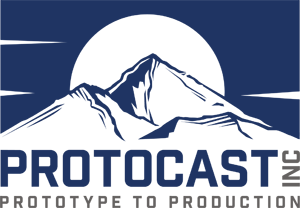
March 10, 2017 | Prototype Casting
Sand Casting
Metal casting is often explained as the transformation of fluid metal into a designed form or specific shape. There are several commercial casting process, each that holds their own special benefits. It is something you need to take into consideration before making manufacturing decisions.
Casting allows a designer to put the molten metal where it is needed the most. Items can be contoured and streamlined for better cosmetic appeal. The need to weld parts together can be terminated by piecing section together before casting. A good casting design will allow for variations in wall thickness.
Casting
Casting is an economical and repetitive process that can turn out several thousand items or parts within specific dimensioning. And the size of a part is only limited by the size of a metal foundry facilities to melt, pour and mold. Foundries are able to produce parts that range from hundreds or thousands of pounds down to parts that are a fraction of an ounce.
Sand
Sand is one of the oldest substances resistant to heat and offers low cost and high versatility. Green sand is not named for its color but rather for its high moisture content. Green sand provides an excellent molding media with high production and low cost. The mold material consists of silica sand mixed with a bonding agent like clay and moisture.
Sand Casting
Sand casting is but one way you can choose for your application. There are other casting options that might work better for your products. This is something that will need to be determined and we will be happy to assist you throughout this entire process.


